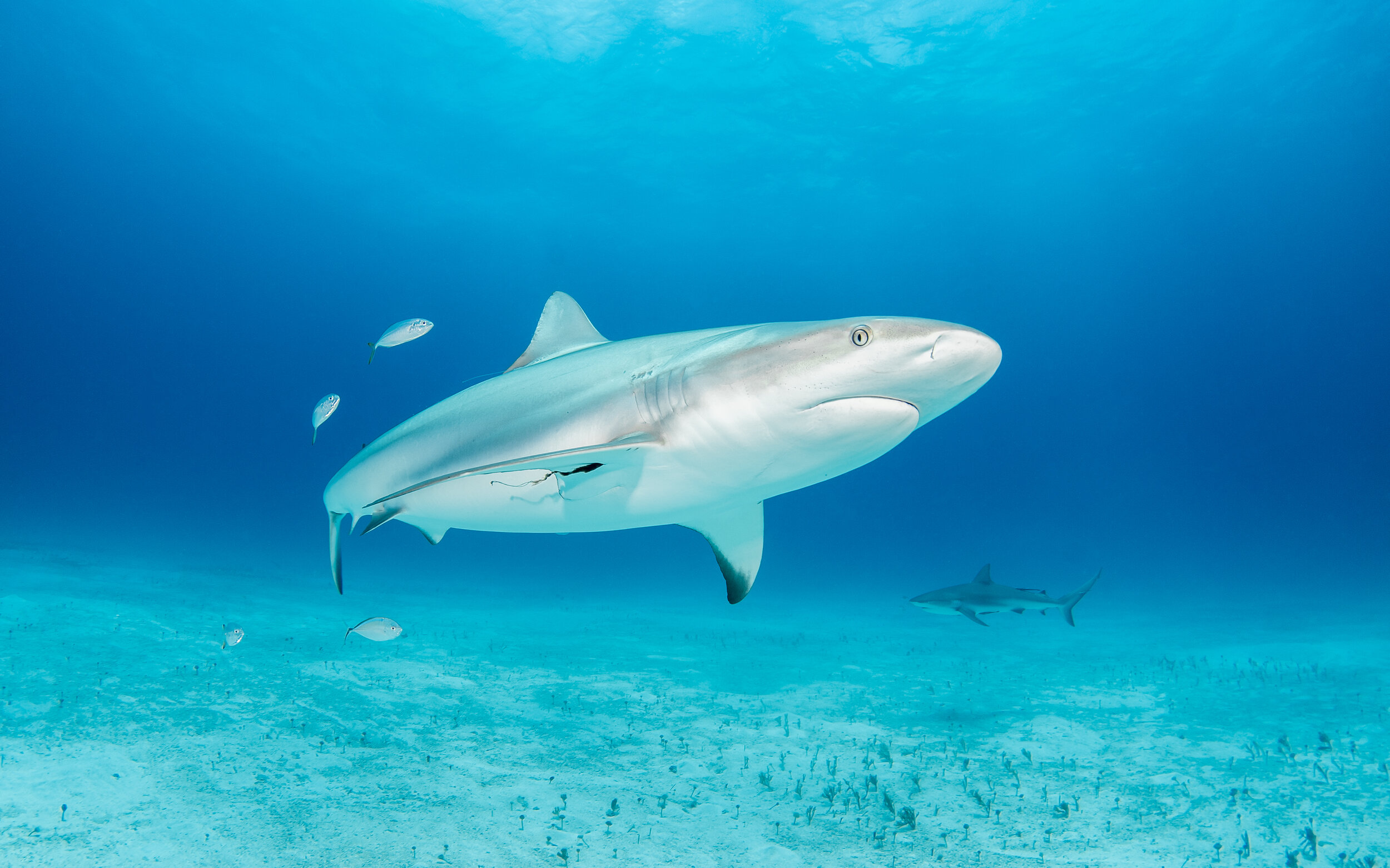
SHARKS IN SINT MAARTEN
Explore the most common sharks and rays (elasmobranchs) encountered while diving with SXM Divers in Sint Maarten. This page provides concise information on species such as the Caribbean reef shark, nurse shark, southern stingray, and spotted eagle ray, all frequently observed at our dive sites. Tiger sharks and great hammerheads are sighted only occasionally. For detailed insights into each species, click the buttons next to their descriptions to view our informative infographics.
Caribbean reef shark
One of the most beautiful and elegant species of shark. We regularly encounter them at various dive sites in SXM. They are not shy around divers and will often come very close, making them fantastic photography subjects. Having dived here regularly, we can recognize many of the individuals and have even named some of them.
Nurse shark
It can often be found resting inside caves or underneath ledges inside the Man Of Shoal Marine Park. They have long conical structures on the snout (called barbels) that help them locate prey and powerful jaws that suck up their food like a vacuum cleaner! They are completely harmless and always a pleasure to encounter on a dive!
Tiger shark
One of our favorite species to dive with! Even though they can reach a length over 5 meters (≈16 feet), they are generally very shy and elusive, so it is very rare to see them. They are born with a distinctive and prominent spotted pattern that then develops into dark stripes and eventually fades as the animal grows.
Great hammerhead
One of the most easily recognizable species of shark. Despite their reputation as dangerous, great hammerhead populations are in decline throughout their historic range, thanks primarily to overexploitation and by-catch. Their life history characteristics make the great hammerhead uniquely vulnerable to endangerment and extinction.
Southern Stingray
Can be found on sandy bottoms, seagrass beds, lagoons, and swimming around reefs. We love to see them buried in the sand and swimming along with the tide in shallower waters. They are very gentle and if you approach them calmly, they will allow you to get very close to them. Despite their bad reputation, injuries by this species are very rare.
Spotted Eagle Ray
The spotted eagle ray is among the most stunning and graceful marine species we encounter. Frequently sighted at numerous dive sites around SXM, these rays exhibit a calm demeanor around divers, often approaching closely. Divers can enjoy the privilege of observing these magnificent creatures up close in their natural habitat.






